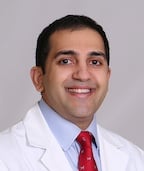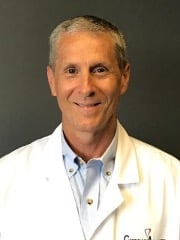Siddharth Singh, M.D., director of the COVID-19 heart program, staff cardiologist and echocardiographer, Cedars-Sinai Hospital, explains what has been learned in the first year of the hospital's long-COVID clinic. Cedar-Sinai was one of the first hospitals in the U.S. to create a cardiac long-COVID clinic. As of January 2022, the clinic has been more than 120 long-COVID patients with cardiac specific complains.
"Depending on what study you read, a percentage of patients with acute COVID infection will go on to develop long-lasting sequelae, but typically the percentage falls over time," explained Siddharth Singh, M.D., director of the COVID heart program, staff cardiologist and echocardiographer, Cedars-Sinai Hospital.
He said studies show between 10-25 percent of COVID patients will experience at least one disabling long-COVID symptom six months after their acute infection.
Cedars-Sinai long-COVID has seen over 500 patients since late 2020. Of these, 120 were referred for cardiac evaluations. The most common presentations in those patients include:
• Shortness of breath
• Exertional intolerance
• Chest pain
• Heart palpitations
• Sensations of light-headedness and dizziness
• Insomnia
• Brain fog
• Constipation
• Diarrhea
• Numbness or tingling in the extremities
• Longer lasting issues with smell and taste
Singh also said many patients experience anxiety and depression due to the continued symptoms, and are concerned the issues they have from COVID may be permanent. Both Baggish and Trivax also reported seeing these issues in many of their patients.
In a smaller subset of patients these clinics have found lingering pericarditis or myocarditis. Most of these patients reported developing chest pain within two week or so after their acute infection. Singh said abnormalities can be imaged using echo and MRI.
"They do typically have abnormalities on imaging. But reassuringly, of all the patients who came to our clinic with these issues, we did not see any decline in left ventricular ejection fraction or systolic function," Singh stressed.
Patients with lingering pericarditis or myocarditis issues are treated with anti-inflammatories. Singh reinforced that the number of patients treated for this have been very low.
Singh said the arrhythmias he has seen include atrial fibrillation (AF) and supraventricular tachycardia. He noted ventricular tachycardia is very rare in these patients. In discussions with his electrophysiology (EP) colleagues, Singh believes the issues with post-COVID arrhythmias often comes down to the substrate of the patient's heart. He said the more cardiovascular disease, cardiomyopathy, scarring, or previous AF a patient has, the more predisposed they are to developing an arrhythmia after a COVID infection.
Watch more of the interview with Singh in the VIDEO: Examination of Cardiac COVID Long-Haulers
Related Long-COVID Content:
What We Know About Cardiac Long-COVID Two Years Into the Pandemic
VIDEO: Long-term Cardiac Impacts of COVID-19 Two Years Into The Pandemic — Interview with Aaron Baggish, M.D.
VIDEO: Long-COVID Presentations in Cardiology at Beaumont Hospital — Interview with Justin Trivax, M.D.
VIDEO: Examination of Cardiac COVID Long-Haulers — Interview with Siddharth Singh, M.D.
Find more COVID news and video













































